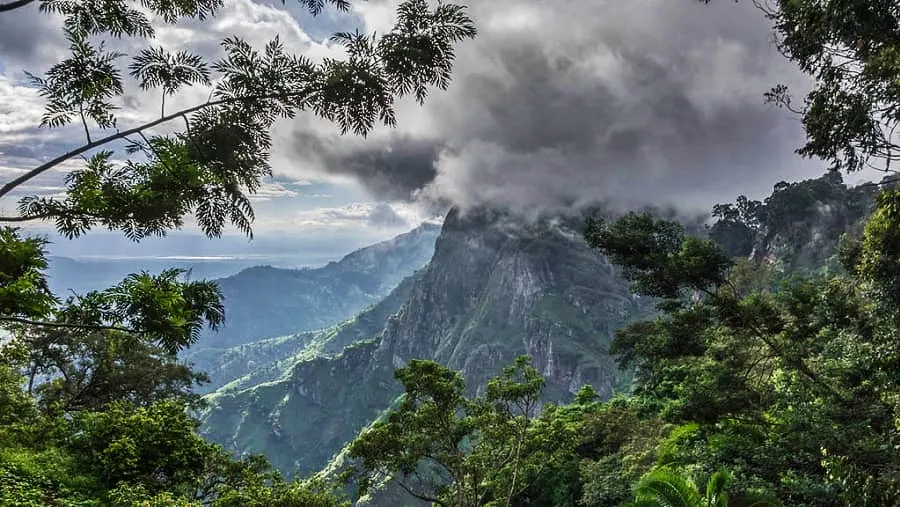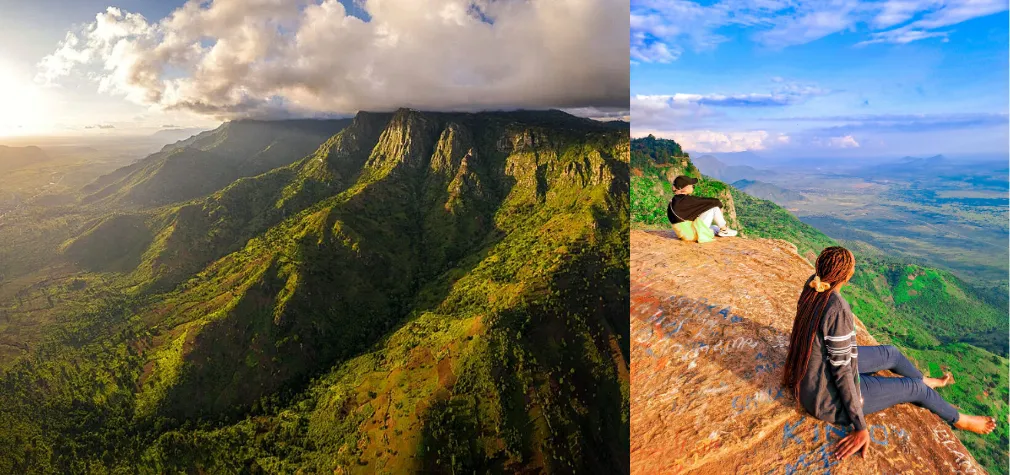Lushoto: Discover the Norway of Tanzania

Where Tanzania Travel Meets a Slice of Europe
There’s a corner of northern Tanzania that feels like it was borrowed from another world. Lushoto, a small town tucked high in the Usambara Mountains, wears its nickname proudly: “The Norway of Tanzania.” Here, pine-covered hills roll into valleys draped in mist, waterfalls tumble through ancient forests, and the air is so crisp it feels like autumn in Scandinavia.
For those who crave both adventure and serenity, Lushoto is a dream carved into the clouds, one that surprises anyone who assumes Tanzania travel is all about savannas and safaris. It’s a place that feels European in climate, yet deeply African in soul.
Having lived there for nearly a year, I can tell you: Lushoto isn’t just a destination. It’s a feeling of cool mornings, warm smiles, and landscapes that whisper stories from both nature and history.
Disclaimer: This article is not sponsored or affiliated with any hotels, lodges, travel agencies, or services mentioned. All recommendations and references are shared purely for informational and travel inspiration purposes. We do not receive any payment, commission, or benefit for mentioning them. Travelers are encouraged to verify current details directly with providers before booking.
The Heart of the Usambara Mountains
Tanzania’s Hidden Highland Gem
The journey to Lushoto is a story in itself. Leaving behind the coastal heat of Tanga or the plains near Moshi, the road begins to climb, winding through switchbacks that reveal deeper shades of green with every turn. Slowly, the air cools. Pine and eucalyptus trees line the slopes, and you realize this is not the Tanzania most travelers imagine.
Nestled between ridges at nearly 1,400 meters above sea level, Lushoto town unfolds like a postcard; red-roofed houses scattered across the hills, a sleepy main street with small cafés, and a sense of timeless calm. The Usambara Mountains are one of Tanzania’s most fertile and biodiverse regions, alive with banana groves, tea farms, and wildflowers that paint the hillsides in vibrant hues.
For anyone seeking to explore beyond the usual safari trail, Lushoto stands out as a Tanzania travel secret; intimate, green, and rich with surprises.
A Climate That Mirrors Northern Europe
The nickname “Norway of Tanzania” makes sense the moment you step out of the car. A cool breeze wraps around you, and a thin mist curls through the trees. Even during the dry season, mornings feel fresh and brisk, and evenings invite you to wrap yourself in a sweater.
The German settlers who once lived here saw in Lushoto a landscape that reminded them of home: pine forests, sloping meadows, and a climate that’s more alpine than equatorial. But what makes this town truly magical isn’t the weather; it’s the way it makes you slow down, breathe deeper, and listen to the quiet pulse of mountain life.

A Legacy Etched by German Hands
When Lushoto Was Wilhelmstal
Long before Lushoto became a beloved name in Tanzania travel, it was known as Wilhelmstal, a colonial settlement founded by German missionaries and farmers in the late 19th century. They built whitewashed villas, Lutheran churches, and schools, carving out a little piece of Europe in East Africa’s highlands.
Today, echoes of that era remain. Old stone houses with steep roofs peek through the trees, and the Lawns Hotel, once a colonial club, still stands as one of Lushoto’s most charming places to stay. Its gardens are a dream that holds manicured lawns, rose bushes, and a swimming pool that steams gently in the cold morning air. Yes, even in the chill of the Usambara Mountains, you’ll find a resort with a pool, proof that Lushoto’s spirit balances comfort with wild beauty.

A Blend of Cultures and Warm Hearts
But the real story of Lushoto is not colonial architecture; it’s the people. The town hums with warmth and hospitality. Locals wave as you walk by, children call out karibu sana (“you’re very welcome”), and the rhythm of life feels both simple and deeply grounded.
Having lived there, I can say the charm of Lushoto lies in its community. The people are proud of their land; they know it’s special, and they love showing visitors the best of it. You’re never far from an invitation to share a meal, a story, or a walk through the fields.

Nature’s Canvas: Waterfalls, Forests, and Views
Magamba Forest: A Whispering Wilderness
Just beyond town lies Magamba Forest Reserve, one of Tanzania’s oldest and most enchanting natural sanctuaries. The forest is dense and alive, towering trees, moss-covered roots, and sunlight that filters through the canopy in silver streaks.
Hiking here feels like entering another world. You might catch the call of a colobus monkey, or the rustle of a chameleon hiding among ferns. Every trail smells of damp earth and pine. Local guides, often trained in conservation, lead visitors through this green labyrinth, sharing stories about medicinal plants and ancient spirits said to guard the forest.
It’s not just a hike, it’s a meditation in motion.
Irente Viewpoint: Where Heaven Touches Earth
Few places define Tanzania travel quite like Irente Viewpoint. Standing there, you feel suspended between sky and earth, with clouds drifting below your feet and the plains of Maasai land stretching endlessly beyond.
At sunrise, the world glows gold and pink. At sunset, the valley below turns into a patchwork quilt of greens and browns. From this point, you can spot villages, farms, and even distant ridges fading into the horizon. It’s easy to see why visitors call it one of the most breathtaking viewpoints in East Africa.

Hidden Waterfalls of the Usambara Mountains
The Usambara Mountains are alive with water. Small streams cross every path, feeding into waterfalls that pour from cliffs and crevices. Soni Falls and Kisasa Falls are among the most famous, but locals will tell you there are many more, hidden cascades tucked behind banana groves or at the end of narrow trails.
Each waterfall feels personal, a secret gift to those who make the effort to find it. You’ll hear the roar before you see it, then the cool spray hits your face, and you realize you’re standing in one of nature’s masterpieces.
Lushoto Town: Small, Simple, and Full of Soul
Markets and Daily Rhythms
Downtown Lushoto may be small, but it’s alive with color and character. The market buzzes with farmers selling fresh produce of avocados, passion fruits, and bananas, their baskets bursting with green. The scent of roasted maize and chapati fills the air, and you might spot women in vibrant khangas bargaining good-naturedly over prices.
There’s a slowness here that soothes. People greet each other by name, and even a simple trip to buy vegetables can turn into a conversation about the weather or family. This is everyday life in the Usambara Mountains, and it’s what makes Lushoto feel so human, so grounding.
German Architecture Meets African Warmth
Walk through town and you’ll still see remnants of its European past: steep-roofed cottages, stone staircases, and gardens blooming with hydrangeas. Yet the town’s heart beats to an African rhythm: drums at night, Swahili songs drifting from small bars, and laughter echoing through the mist. It’s this blend of European charm and African soul that makes Lushoto travel so unforgettable.

Life Among the Clouds: A Year in My Second Home
How Lushoto Changes You
Living in Lushoto for nearly a year changed the way I saw life. Mornings began with fog rolling through my window and roosters crowing somewhere below. Days were filled with writing, hiking, and endless cups of chai. Nights were quiet, just the sound of crickets and the occasional bark of a dog in the valley.
In a world that moves too fast, Lushoto teaches stillness. It reminds you that beauty doesn’t need to be loud to be profound.
The People Who Become Family
Over time, strangers became friends, and friends became family. The shopkeeper who saved the best bread for me, the farmers who taught me to dig potatoes, and the children who laughed every time I tried my Swahili, they all became part of my story.
That’s the thing about Tanzania travel, it’s not just the landscapes you remember, but the faces, the kindness, the laughter shared over warm tea on a cold mountain evening.
Sustainable Travel in the Usambara Mountains
Walking the Talk of Eco-Tourism
Lushoto is one of the best examples of community-driven eco-tourism in Tanzania. Local travel agencies organize guided hikes, village tours, and eco-lodge stays that directly benefit local families.
From Irente Farm Lodge to Mambo View Point Eco Lodge, travelers can enjoy comfort while knowing their stay supports conservation and education projects in the region.

Keeping the Usambaras Green for Generations
Sustainability isn’t just a trend here; it’s a way of life. Locals take pride in protecting the forests and soil that sustain them. Many lodges practice organic farming, replant trees, and use solar energy.
By choosing locally owned accommodations, hiring local guides, and respecting the trails, visitors play a role in keeping Lushoto’s magic alive for future generations.
Planning Your Lushoto Adventure
Getting There and Around
Lushoto is about a 5–6 hour drive from Dar es Salaam, or 3 hours from Tanga. Travelers can also come from Moshi or Arusha via Mombo Junction. Public buses run daily, though many prefer private cars to enjoy the scenic climb through the Usambara Mountains.
Once in town, boda-bodas (motorbikes) and local taxis are the best way to get around. Many resorts and lodges also organize transfers and hiking tours for their guests.
Best Time to Visit the Usambara Mountains
Although the climate is pleasant all year round, the trails become too muddy for trekking during the rainy season that stretches from March to May. The best time to visit Lushoto is from June to October, when the skies are clear, the air is crisp, and hiking trails are at their best. Even so, the rainy season paints the Usambara Mountains in their deepest greens, perfect for travelers who don’t mind a little adventure.
Where to Stay: Cozy Lodges and Mountain Inns
Lushoto’s accommodations range from eco-lodges to charming colonial hotels. The Lawns Hotel remains a timeless favorite, known for its manicured gardens and history. Irente Farm Lodge offers cozy cottages and homemade cheese. For a sustainable touch, Mambo View Point provides breathtaking views and eco-conscious living.
If you’re craving a bit of indulgence, you’ll even find resorts with swimming pools … yes, in these cold mountains, where you can soak after a long day of exploring. Camping enthusiasts can pitch tents near forest trails, while adventurers can book guided treks across the Usambara range.

Why Lushoto Stays in Your Heart
When travelers speak of Tanzania, they often talk of the Serengeti’s lions or Zanzibar’s beaches. But those who’ve been to Lushoto know there’s another kind of wonder here; one that’s quieter, deeper, and harder to leave behind. It’s in the way clouds kiss the hills each morning. It’s in the warmth of strangers who treat you like family. It’s in the cool air that clears your thoughts and the sound of waterfalls that lull you to sleep.
Lushoto isn’t the Norway of Tanzania because it looks like Europe; it’s because it makes you feel like you’ve stumbled into a peaceful, timeless haven. And once you’ve felt that peace, it stays with you, long after you’ve left the mountains behind.
So, if you’re planning your next Tanzania travel adventure, skip the crowds and follow the mist. You’ll find Lushoto waiting: quiet, green, and unforgettable.
FAQ
Can I visit a cheese farm in Lushoto?
Yes! Lushoto is home to Irente Farm Lodge, which operates a small working cheese farm. Visitors can tour the farm, watch traditional cheese-making, and sample fresh artisanal cheese while enjoying panoramic views of the Usambara Mountains. It’s a unique experience that blends culinary discovery with Tanzania travel.
Are there resorts or places to stay with swimming pools despite the cool climate?
Absolutely. While Lushoto is cooler than most Tanzanian towns, some resorts like Lawns Hotel and lodges at Irente offer swimming pools. The water may be refreshing, but the experience of soaking while surrounded by misty mountains is unforgettable.
What hiking trails are available in Lushoto?
The region offers numerous trails for all skill levels, from short walks to full-day treks. Popular paths include Magamba Forest, the trail to Irente Viewpoint, and hidden waterfalls around Soni and Kisasa. Local travel agencies can organize guided hikes, multi-day treks, and cultural tours to enhance your Tanzania travel experience.
Are there travel agencies in Lushoto that help plan tours?
Yes, several local travel agencies specialize in Lushoto and the Usambara Mountains. They offer guided hikes, village tours, camping trips, and eco-lodge experiences, making it easy for visitors to explore the mountains safely and meaningfully while supporting the local community.


